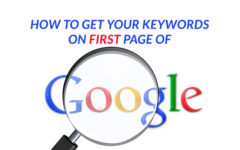 Why do you build a website? To gain traffic and boost your brand’s revenue right? So, how do you achieve that? You can gain higher traffic on your website by increasing the visibility of your site on SERPs and for that, you need to run a strong SEO campaign. A great SEO campaign includes social media presence, building quality backlinks and other off-site practices but, it also requires on-page optimization for better results. One of the most important elements for on-page optimization has been ‘tags’. These tags include title tags, header tags, blog post tags and meta tags, which have all been important to increase traffic and boost engagement. But, with the changing SEO trends from time to time, it is vital to know whether these tags are still important and effective in 2016. Read ahead to find an answer to this question.
Why do you build a website? To gain traffic and boost your brand’s revenue right? So, how do you achieve that? You can gain higher traffic on your website by increasing the visibility of your site on SERPs and for that, you need to run a strong SEO campaign. A great SEO campaign includes social media presence, building quality backlinks and other off-site practices but, it also requires on-page optimization for better results. One of the most important elements for on-page optimization has been ‘tags’. These tags include title tags, header tags, blog post tags and meta tags, which have all been important to increase traffic and boost engagement. But, with the changing SEO trends from time to time, it is vital to know whether these tags are still important and effective in 2016. Read ahead to find an answer to this question.
Title tags
Title tags are displayed in SERPs, which makes it easier for the readers to know what the page is about. They also help search engines to understand a page’s topic. A title tag will let the readers know what they can expect from the page when they click to open it thus, title tags greatly determine click-through rates. In the past, when title tags were considered one of the most important factors of SEO, they were stuffed with keywords to get a higher ranking. But now, Google no longer requires title tags to be stuffed with keywords. In fact, you don’t even need to include an exact keyword in your title tag to tell the search engine about your page’s subject matter. Google now intelligently compares title tags with the other content on the page to index and rank Web pages. This means that title tags are definitely important for SEO but, they aren’t the only important element today and neither do they need to be keyword-focused.
Header tags
Header tags are used to differentiate the heading and sub-headings of a page from the rest of the content. It will usually be the title of a post or other emphasized larger text on a page. Header tags run from h1 to h6 from top to bottom in sense of importance. Earlier it was essential to include just one h1 tag in your content but today, you can utilize multiple h1 tags on per-section basis, which has lessened the importance of the hierarchy of header tags. A report says that 2 in every 5 Web pages in SERPs don’t utilize h1 tags at all. This may be due to the lessening importance of header tags. In contrast, the number of pages using h1 tags has increased by 4% as compared to the year 2014. So, this says that designers consider header tags to be more important. Several case studies have also highlighted the importance of using header tags effectively. So, header tags are here to stay with proper optimization for increasing rankings of a page.
Blog post tags
A majority of blog posts are seen to add contextual tags to their posts today. WordPress and other blogging platforms provide users with a list of posts grouped by specific topics than categories. Blog post tags can be very helpful to visitors to be able to identify posts that cover specific topics, thus improving user experience by making it easier for them to find what they are looking for. They also help search engines to interpret the page’s content easily, which can in turn help to rank your site better. They are not directly influential but, they can improve SEO indirectly by lowering bounce rates and increasing time on site.
Meta tags
Meta tags have lost their importance over the past several years, which is the reason why websites have almost stopped using them. So, without discussing about it any further, we can say that meta tags are now dead in terms of SEO benefits.
Google focuses on user experience of a website to grade it on SERPs. If you can provide high-quality user experience, you can expect to benefit in terms of SEO. And, to get the most out of your SEO strategy, you need to use tags effectively. You can get in touch with the best SEO experts in Bangalore to help you with using the tags effectively and in every other aspect to help you gain better ranking in SERPs.



